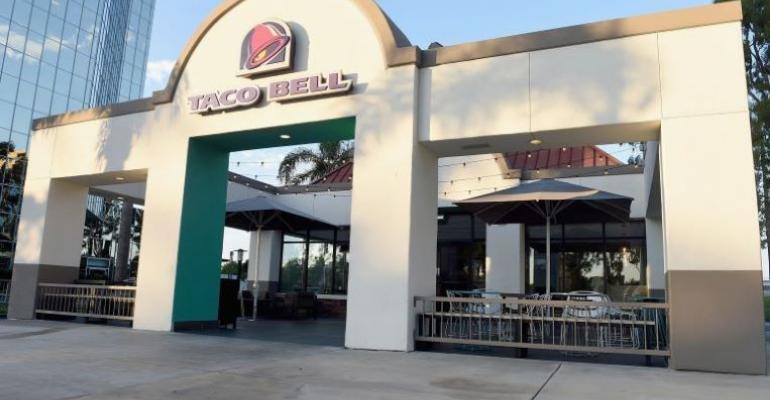Chains with well-oiled digital channels and drive-thru lanes performed better in the second quarter despite the catastrophic economic impacts of COVID-19. That was the case for Yum Brands, whose digital sales reached an all-time high of $3.5 billion for the quarter, an increase of more than $1 billion compared to the same period last year.
“I think we've demonstrated that the business is incredibly resilient and nimble [and] that our teams around the world can move with speed to get new solutions out to meet customers' needs,” CEO David Gibbs told investors Thursday morning during the company’s second quarter conference call.
Two of the company’s four brands, KFC and Pizza Hut, posted positive same-stores sales in the U.S.
Taco Bell, which “had the most ground to make up” as it was hit hard at the start of the pandemic, is posting positive comps in the current quarter. For the second quarter, the Irvine, Calif.-based chain reported an 8% drop in same-store sales. But that’s coming off a 7% gain in the same quarter last year.
“That's enormous progress given the hit to their business,” Gibbs said.
Gibbs said Taco Bell “pivoted really well” in the second quarter by trimming the menu to serve only the items that consumers love and adding innovative products such as the new Grilled Cheese Burrito and the $5 Cravings Boxes.
During the quarter, Taco Bell added more than 1 million new users to its digital channels and served an additional 4.8 million cars through the chain’s drive-thru lanes, underscoring the strength of the brand’s off-premise business.
The company reduced drive-thru wait times by 18 seconds and began testing curbside pickup.
Going forward, there’s more opportunity for gains with the recent rollout of the company’s new loyalty program.
“The brand with a huge amount of momentum as we come out of the quarter and [we’re] very excited about the future for Taco Bell,” Gibbs said.
Globally, the Louisville, Ky.-based restaurant company said 95% of its restaurants are open though 24,000 dining rooms remain closed.
“It's really quite impressive that we're able to get sales now globally back to approaching flat without those dining rooms in the majority of our stores,” Gibbs said.
While it’s important to get dining rooms open over time, Gibbs said it is not “critical to our success.”
Global same-store sales were down 15%. Broken down by division: KFC same-store sales were down 21%; Taco Bell dropped 8% and Pizza Hut was down 9%.
The Habit Burger Grill, which the company acquired in March, logged an 18% decline in same-store sales. Most of that decline was driven by temporary closures at the onset of the pandemic.
Gibbs said the fast-casual burger chain “faced a massive headwind” but has “quickly turned things around by shifting focus to off premise.”
Recent trends for open stores are flat to slightly negative, he said.
In the U.S., same-store sales at KFC increased 7% and Pizza Hut posted a 5% gain.
Yum said Pizza Hut has made significant progress in the U.S., a division that was struggling prior to the pandemic. In May, the chain recorded record weekly sales for delivery and carry out.
Since March, the pizza chain has served nearly 20 million contactless digital orders and has logged several million “new and re-engaged customers” to the brand’s loyalty program, Gibbs said.
Total revenue for the quarter was $1.2 billion, down from $1.3 billion for the same quarter, last year. Net income decreased 29% to $206 million.
Store counts in the U.S. at the end of the second quarter: KFC: 4,012; Pizza Hut: 7,075; Taco Bell: 6,796 and Habit Burger: 270.
For our most up-to-date coverage, visit the coronavirus homepage.
Contact Nancy Luna at [email protected]
Follow her on Twitter: @fastfoodmaven





